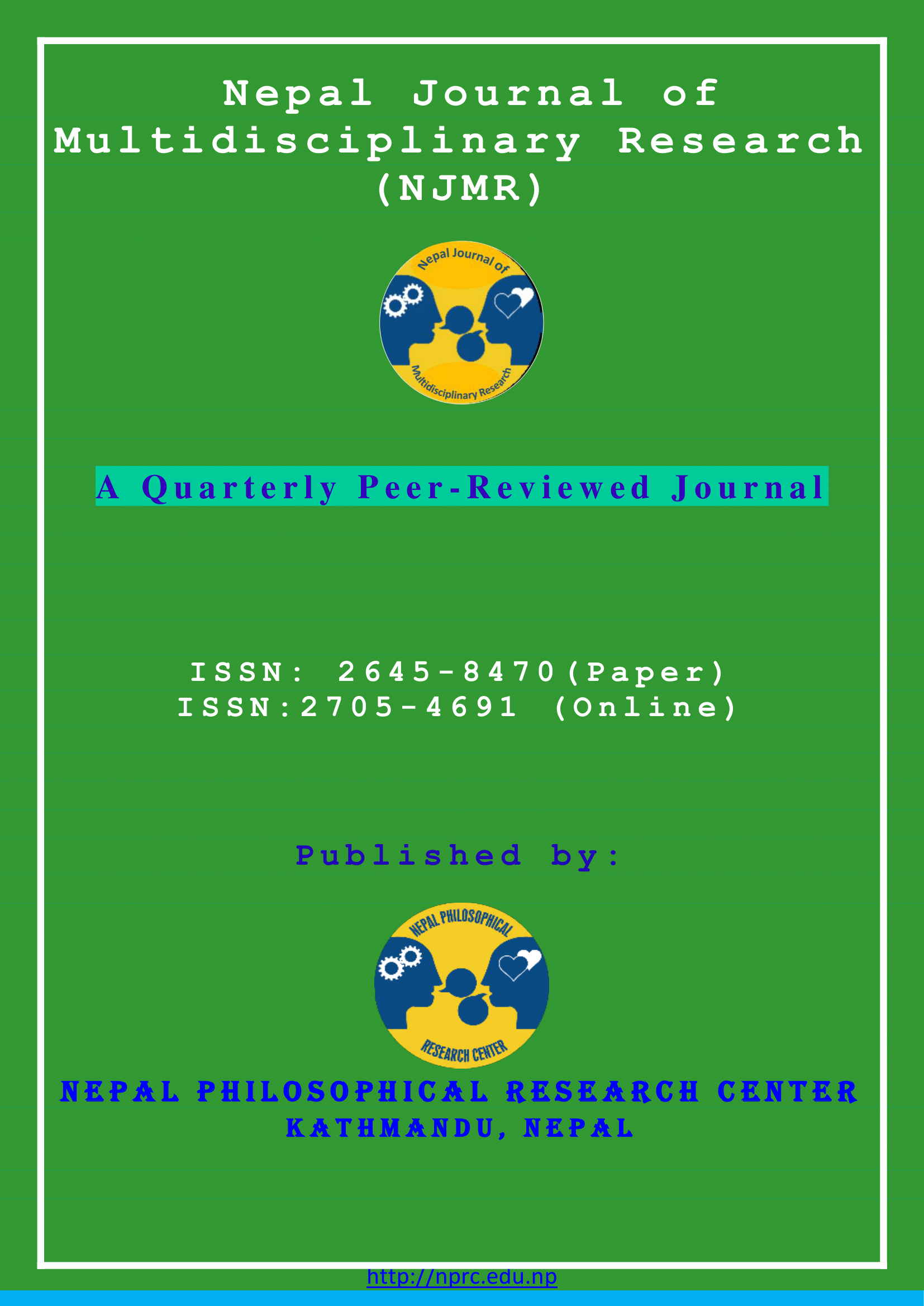Female Violence and the Force of Trauma in “The City of Sorrow”
DOI:
https://doi.org/10.3126/njmr.v4i3.42895Keywords:
Violence, traumatic effects, soul, redemption, identity politics, displacement, moralityAbstract
The focus of this study is on the area of traumatic affect. Intizar Hussain represents female violence and displacement during India’s partition in neutral way keeping identity politics away. Such a study is important to observe trauma literature in the light of pure affect and critically evaluate the trauma literatures which are found to have been valorizing one side and demonizing others for the vested interest. The research approach adopted in this study includes literature review of women violence during the partition and a brief comparison of ‘The City of Sorrow ‘with ‘Train to Pakistan’ to identity two different approaches of representing trauma. The findings from this study provide an insight on pure affect evoked by Hussain. The conclusion drawn from this study sheds light on how the hatred and the violence create the vicious circle of trauma and the chain can be minimized in trauma art by ‘moral working through’, keeping identity politics at bay.
Downloads
Downloads
Published
How to Cite
Issue
Section
License
Copyright (c) 2021 Tek Bahadur Chhetry, Tika Ram Kandel

This work is licensed under a Creative Commons Attribution-NonCommercial 4.0 International License.
This license enables reusers to distribute, remix, adapt, and build upon the material in any medium or format for noncommercial purposes only, and only so long as attribution is given to the creator.




